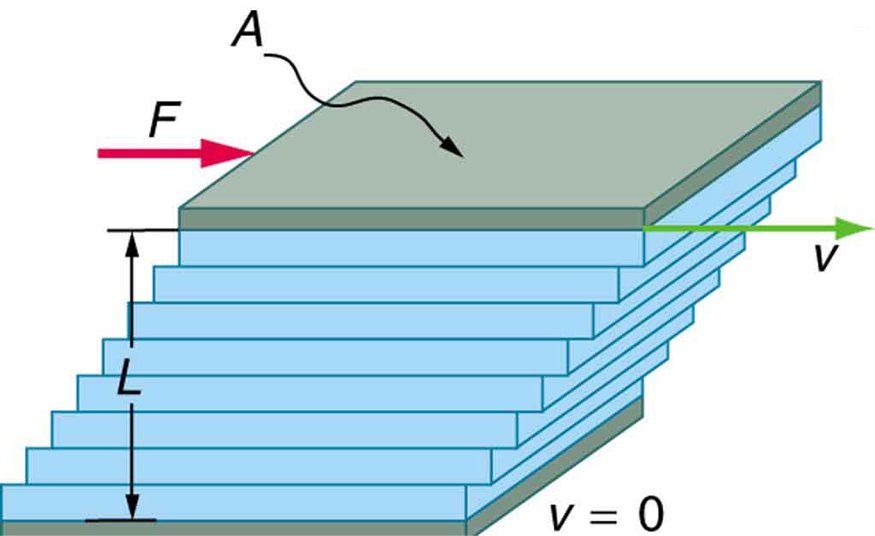Fluid mechanics is a field of physics that looks at how gases and liquids behave when they are moving or not moving. It’s a basic idea that affects almost every part of our daily lives. Fluid physics is the study of how things move, from how water moves through your pipes to how air moves over an airplane wing.
Not only engineers and experts can understand fluid physics. It can be used in real life to predict the weather, build cars, make medical devices, run HVAC systems, and even cook. You can see fluid dynamics at work whenever you drink a drink, drive a car, or watch trees move in the wind.
At its core, fluid mechanics helps us guess how fluids will act when they are moved, heated, or under different pressures. With this information, we can make buildings safer, transportation better, energy conservation better, and even sports gear better.
What Fluids Are: Liquids and Gases
It’s important to know what a fluid is before you can talk about flow and pressure. A fluid is any material that can move and change shape when it does so. This includes oil, water, and other liquids, as well as air and steam.
When you look at a fluid, it doesn’t have a set form, and its molecules can move around easily. That’s what lets them flow. Viscosity is a measure of how much they prevent flow. For instance, honey is more sticky than water, which means it moves more slowly and doesn’t run as easily.
Pressure is what makes fluids behave the way they do
It is important to know about pressure in fluid physics. To put it simply, pressure is the force that a fluid applies per unit area. It’s written in terms like atmospheres (atm), pounds per square inch (psi), and Pascals (Pa).
Think about blowing up a balloon. The air you blow into the balloon puts pressure on the inside walls. The more air you add, the more pressure there is. If the pressure gets too high, the balloon will finally break.
When pressure acts on a stream, it always acts perpendicular to the area it hits. Because of gravity, it goes up with depth in liquids. This is why diving divers feel more pressure as they go down.
Pressure in gases changes based on temperature, volume, and the amount of gas present. The ideal gas rule talks about this relationship:
- PV = nRT, where P is the pressure and n is the time.
- V = amount
- n = number of moles
- R = the gas constant
- T = Kelvin temperature
Flow: How Wet Things Move
Flow is the way that a liquid or gas goes from one place to another. There are two main types of how this movement acts: turbulent flow and laminar flow.
The particles in laminar flow move in parallel lines and are smooth and ordered. It happens a lot at slow speeds or in pipes with a small diameter.
On the other hand, turbulent flow is disordered and lumpy. It happens in bigger systems and at faster speeds. There are waterfalls in rivers and drag on jets because of turbulence.
The Reynolds number (Re) can be used to guess when flow will change from laminar to turbulent. This number, which doesn’t have a unit, compares the effects of inertial forces to those of viscous forces in a stream. Flow is usually smooth when Re is less than 2,000 and turbulent when it’s more than 4,000.
Bernoulli’s Principle: Speed and Pressure Should Be Equal
Bernoulli’s principle is one of the most well-known ideas in fluid physics. It says that when the speed of a steady, uncompressible flow of fluid goes up, the pressure goes down.
This idea tells us why airplanes can fly. The bent top of a wing causes less pressure than the flat bottom because air moves faster over it. This provides lift. This is also why a shower curtain pulls in when you turn on the water: the fast-moving air lowers the pressure inside the shower.
This idea is summed up by Bernoulli’s equation:
Since P is pressure and νρv² and ρgh are constants,
α = density of the fluid v = speed g = gravity
h stands for height.
In a stream that is moving, this equation shows that energy stays the same and comes in three forms: pressure energy, kinetic energy, and potential energy.
Flow Rate and Staying the Same
What is flow rate? It is the amount of liquids that moves through a place in time. Usually, it’s written in terms of gallons per minute (GPM) or liters per second (L/s).
What does flow do in different parts of a system? The continuity equation helps explain it:
If A is the cross-sectional size and v is the speed, then A₁v₁ = A₂v₂.
This means that the fluid has to speed up if the pipe gets smaller so that the flow rate stays the same. Like when you squeeze the end of a yard hose. The water comes out faster.
Uses of Fluid Mechanics in Real Life
Fluid physics is used in many places, not just schools. It is used by engineers to plan water supply systems, improve the efficiency of cars, and control the flow of air in buildings. In medicine, it helps explain how blood flows and is used to make life-saving machines like ventilators.
Fluid dynamics is a way for meteorologists to describe how weather works. People can even change games. For example, knowing how air moves over a soccer ball can help a player develop their curve shot.
A Quick Look at Common Fluid Behavior
In fluid mechanics, here is an easy picture that shows the main differences and how they behave:
| Concept | Description | Example |
|---|---|---|
| Pressure | Force per unit area in a fluid | Tire pressure, water at depth |
| Laminar Flow | Smooth, orderly flow | Syrup flowing in a thin stream |
| Turbulent Flow | Chaotic, swirling flow | River rapids, smoke from a fire |
| Bernoulli’s Principle | Speed increases → pressure decreases | Airplane lift, shower curtain effect |
| Reynolds Number | Predicts flow type (laminar vs turbulent) | Pipe design, oil pipelines |
| Continuity Equation | Flow rate stays constant in a closed system | Hose nozzle spray |
Frequently Asked Questions
What’s the difference between fluid mechanics and hydraulics?
Fluid mechanics is the broader study of fluid behavior, including both liquids and gases. Hydraulics is a subfield focused specifically on liquids in motion, often under pressure, such as in pumps or brakes.
How does viscosity affect flow?
Viscosity is a measure of a fluid’s resistance to flow. Thicker fluids like honey have high viscosity and flow slowly. Lower viscosity fluids like water flow more easily.
Can gases and liquids both experience pressure changes the same way?
Not exactly. Gases are compressible, meaning their volume changes with pressure. Liquids are mostly incompressible, so their pressure changes mainly depend on depth and gravity.
Why does a fast-moving fluid have lower pressure?
According to Bernoulli’s principle, as the speed of a fluid increases, its pressure decreases to conserve energy. This effect is common in both air and water flow.
What causes turbulence in fluid flow?
Turbulence results from high velocity, obstacles in the path, or sharp bends in the system. It’s characterized by irregular, swirling motion and higher energy loss.
Is fluid mechanics used in weather forecasting?
Absolutely. Meteorologists use fluid dynamics to simulate atmospheric conditions, track storm systems, and predict weather patterns based on air and ocean flow.

